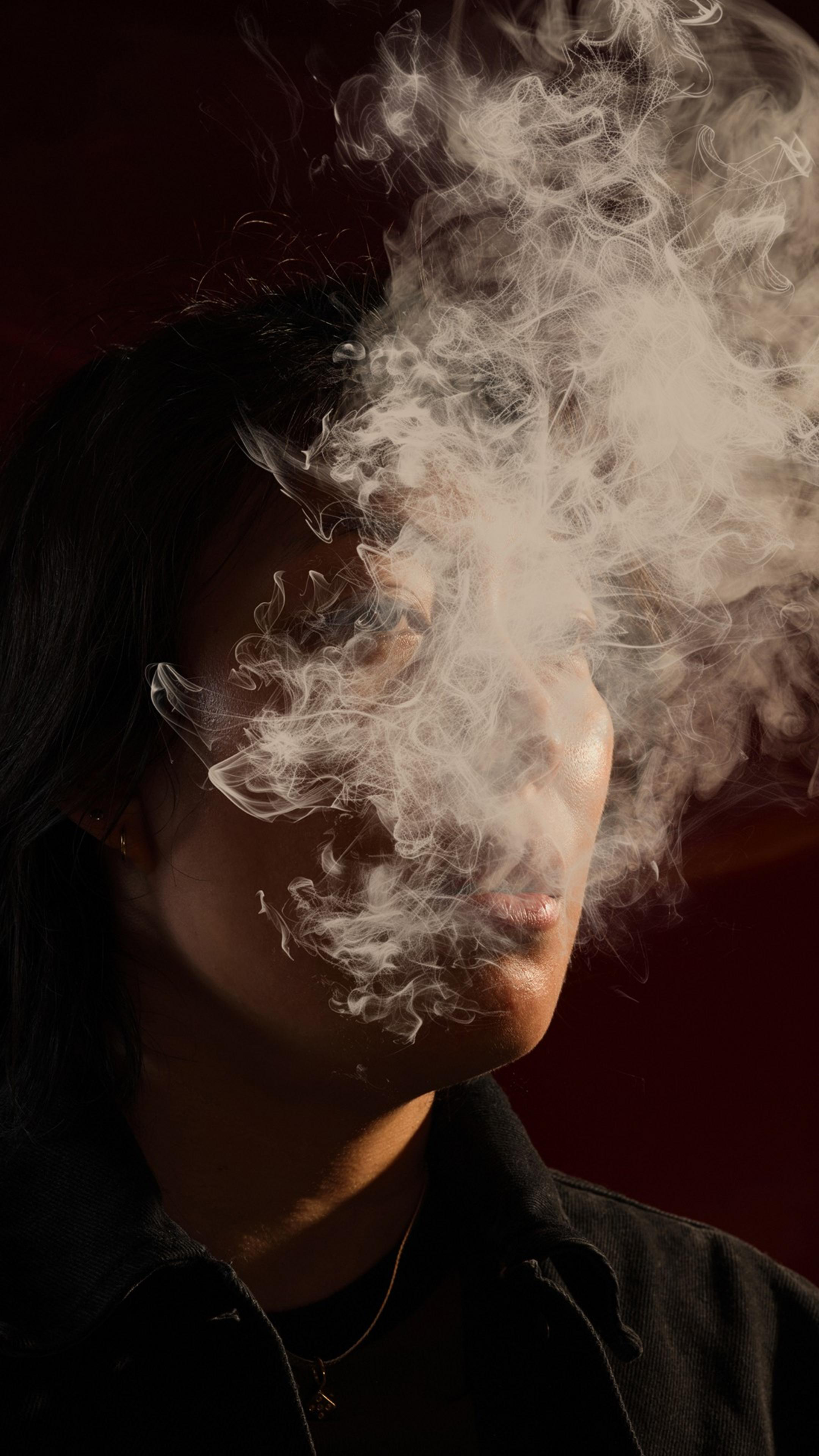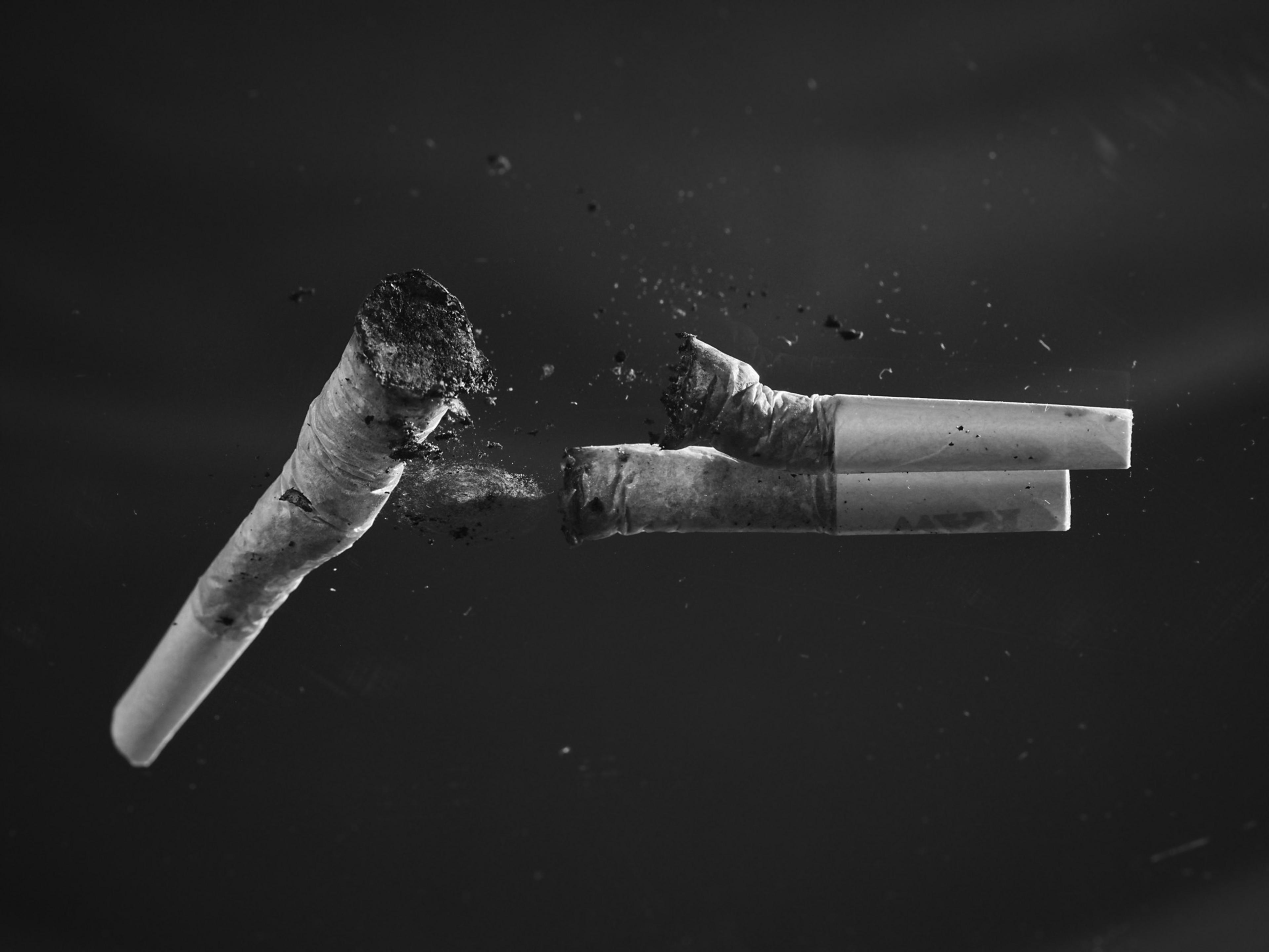It was fun in the beginning. As a high school student in San Diego, Zach would get high with his friends at an abandoned construction site next to his school. Afterward, they’d go out for Mexican food or hit the beach.
“Pretty standard SoCal stoner experience,” he said.
But at some point, Zach, now 31 and living in San Francisco, noticed that he was smoking more than his friends and couldn’t put down the weed once he’d started. A straight-A student in high school, Zach couldn’t stop smoking for long enough to study in college and ended up withdrawing for a quarter. Things only got worse from there.
He was smoking vapes that were 94% THC, all day, every day, he said. He couldn’t keep food down and was vomiting every morning when he woke up. He took hot showers throughout the day because he was always cold.
This went on for a month. Zach learned later that he was suffering from cannabinoid hyperemesis syndrome, or CHS, a condition caused by excessive THC in the bloodstream that has killed at least eight people in the U.S (opens in new tab).
“There was a day I vomited a bunch and then immediately smoked more,” Zach said. “I just wanted to end it.”
He called a suicide hotline that day and resolved to stop smoking. After a series of false starts, Zach committed to a program through Marijuana Anonymous and kicked the habit. Now five years sober, Zach is one of a growing number of Bay Area residents who have sought treatment for cannabis addiction after realizing the drug they thought was harmless was ruining their lives.
Experts say the increase in people seeking treatment for marijuana addiction is due simply to the unprecedented potency and accessibility of weed. While there’s no comprehensive national data, attendance at San Francisco’s most popular Marijuana Anonymous meeting has tripled since 2019.
Chris Colwell, chief of emergency medicine at Zuckerberg San Francisco General Hospital, said the number of emergency room patients who come in with adverse symptoms from weed has increased tenfold since legalization in 2016. Before that, he said, the ER would see a few patients a week with cannabis-induced nausea, vomiting, or delusions. Now, he estimates, four or five come in every day.
Zach, like others in recovery, asked for his last name to be withheld to maintain his anonymity.
‘Soul death’
San Francisco has a long history with weed. The smell of skunk has lingered on Haight Street since the Summer of Love, and Hippie Hill’s fragrant drum circles have been steady for decades. If there was anywhere the transition to legal weed should have been seamless, it was here. But it didn’t work out that way. Now, as the city deals with a worst-in-the-nation fentanyl crisis, another epidemic has sprung up alongside it.
Colwell said the increase in hospital visits may stem from the fact that people are more willing to admit to being high since weed became legal. Some ER visitors have underlying psychosis and just happen to be high when they come in.
All this comes after a years-long rebrand that has cast pot as a natural medicine and helped legalize recreational use in 24 states. Legalization only accelerated the public’s embrace, and locals got used to seeing ads for cheap eighths on freeway billboards and the internet.
Now, even the feds appear to be softening — the Department of Justice last year began proceedings to reclassify cannabis as a Schedule III drug.
But those who are addicted and medical professionals warn that the pendulum of acceptance may have swung too far, and too many people downplay the risks of daily cannabis use.
“I smoked weed like crack,” said Ella, 26, a local Marijuana Anonymous member. “I wasn’t smoking weed like your grandma who grows weed in her backyard. I was smoking weed like an addict.”
A big part of the problem is that the drug has changed. What experts call “traditional cannabis” — most of the stuff you could get on the street 20 years ago — was in the neighborhood of 5% THC. Now, the weed on dispensary shelves contains 20% or 30% THC. And wax vape cartridges are more potent still.
“People think, ‘Oh, it’s just weed,’ but it’s not just weed,” said Dr. Roneet Lev, who works in a San Diego emergency room. “A 90% THC vape — that’s more like methamphetamine.”
'It's more like a soul death. You don’t really feel like a person anymore. You’re just so shut out from the world and reality.'
Ella, a Marijuana Anonymous member
Like meth, high doses of THC can raise blood pressure and make the user feel overheated, she explained. They can also cause similar mental effects, like racing thoughts and delusions.
Does this all sound a bit much? Remind you of the scare tactics you encountered in middle school? Well, that’s a challenge too.
“You had exaggerated allegations like ‘Reefer Madness’: ‘One joint is going to make you go crazy!’” said Dr. Lynn Silver, cannabis expert and senior adviser at Berkeley’s Public Health Institute. “That almost discredited the discussion of psychosis. But oh, man, talk to the emergency room doctors.”
Lev has been working as an ER doctor for more than 30 years. When she started, she never saw patients come in with CHS or cannabis-induced psychosis. Now, she said, she sees “cannabis poisoning” every day. She and other doctors use “scromiting,” or scream-vomiting, as a shorthand for CHS.
These symptoms transcend generations. One study (opens in new tab) found that weed-related ER admissions for people over 65 increased more than 1,800% between 2005 and 2019. Another (opens in new tab) showed that THC is the most common chemical found in the systems of teen suicide victims in Colorado.
“There’s a lot of buzz around psychedelic medicine and plant medicine,” Ella, the Marijuana Anonymous member, said. “This is kind of the new frontier. Like, cigarettes and alcohol are bad, but if you’re ‘California sober’ [weed only; no drinking], then you’re sober — that’s the mentality.”
But it’s not all good vibes and pain relief, even for people who don’t suffer from the most extreme effects. People who become dependent on weed can’t stop thinking about it and can’t stop using it, even when they know it’s ruining their lives.

“You’re not gonna overdose on weed, but you can definitely still die,” Ella said. “It’s more like a soul death. You don’t really feel like a person anymore. You’re just so shut out from the world and reality.”
Before Ella entered treatment, she said, she became so dependent on weed that she would do almost anything for it. This dependence led to a series of sexual assaults. She said she came to Marijuana Anonymous with intense post-traumatic stress disorder, but it was only after she started going to meetings that she came to see herself as addicted.
‘Most definitely addictive’
At a recent Marijuana Anonymous meeting on Zoom, participants ranged in age from the 20s to the 70s. Some had been clean for 10 years; others were in their first week of sobriety. One person said they’d been to three meetings that day because they were jonesing to smoke so badly and were hoping to prevent a relapse. All 25 attendees praised the communion the meetings offer. In closing, the host said, “Let this group remind us that we never have to do this alone.”
Marijuana Anonymous, a popular 12-step program with daily meetings at locations across the country and online, has been around since the late 1980s, though many people have never heard of it.
“There’s such a widespread belief that you can’t become addicted to [weed],” Zach said. “Something I hear really often in meetings from new people is that they didn’t know MA existed for years, even though they knew they had a problem. It didn’t cross their minds that there might be a dedicated program for it.”
Silver is definitive.
“Weed is most definitely addictive,” she said. “There is scientific consensus on this.”
Cass, 28, MA’s district chair for the Bay Area (who, like others in the program, does not use a surname), said attendance at San Francisco’s most popular weekly meeting has tripled since 2019 (from about 10 to 30), and the number of Bay Area weekly meetings has increased from 12 to 17. Attendance numbers are even higher for remote meetings every day on Zoom.
It’s not the only organization providing recovery services. Bayside Marin, a luxury rehab facility in the San Rafael hills, offers a residential detox and therapy program for people struggling with marijuana use. A monthlong stay comes with sweeping views of the bay, farm-to-table dinners, and a $62,500 price tag.
Marijuana Anonymous meetings follow the familiar 12-step format — organizers display texts on how to identify problem use, and attendees volunteer to read them aloud. Then, for most of the meeting, people share.
'Something I hear really often in meetings from new people is that they didn’t know MA existed for years, even though they knew they had a problem. It didn’t cross their minds that there might be a dedicated program for it.'
Zach, a Marijuana Anonymous member
Cass added that it’s important to remember that some people can use cannabis safely and not become addicted, and others can’t — just like with alcohol.
“I’m really stoked for people who can use marijuana as medicine,” she said. “There’s a very strong cultural push toward accepting marijuana, but there’s a limit to that. And I don’t know if that conversation is being taken up as quickly.”
Even for people who recognize that they have a problem, it’s not easy to quit.
Zach and Ella both said they took breaks from smoking before quitting completely but invariably relapsed.
“I felt like I always had to have it,” Zach said. “Even if I would throw it away before going to bed, I would get up in the morning and get it out of the trash.”
The Green Rush enthusiasm in California may have already hit a high-water mark and started to recede. Contra Costa County and Watsonville in Santa Cruz County prohibit flavored vapes, according to the California Department of Public Health (opens in new tab), and Grass Valley in Nevada County taxes high-potency cannabis sales. In San Francisco, the official 4/20 celebration in Golden Gate Park was canceled this month for the second year in a row, and the city has still not cleared the way for pot lounges to serve food, even after cannabis cafes became legal statewide.
Other states are regulating weed more stringently. Connecticut, Vermont, and Virginia enforce a variety of regulations, including potency limits on flower (30% in Connecticut and Vermont) and edibles (5% doses in all three states). All of this comes amid a growing understanding of marijuana’s dangers. It’s only a matter of time before San Francisco may have to grapple with that truth as well.
As for Zach, he’s just glad he finally kicked his weed addiction.
“Things are really great,” he said. “I’m very happy with my life now.”
If you or someone you know is struggling with suicidal thoughts, call or text “988” any time to reach the Suicide and Crisis Lifeline, or chat online (opens in new tab).

